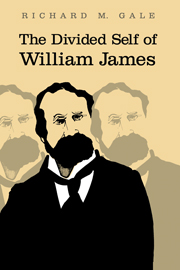Book contents
- Frontmatter
- Contents
- Acknowledgments
- Introduction
- The Promethean Pragmatist
- 1 The Ethics of Prometheanism
- 2 The Willfulness of Belief
- 3 The Freedom of Belief
- 4 The Will to Believe
- 5 The Ethics of Truth
- 6 The Semantics of “Truth”
- 7 Ontological Relativism: William James Meets Poo-bah
- The Anti-Promethean Mystic
- Appendix
- Bibliography of Works Cited
- Index
6 - The Semantics of “Truth”
Published online by Cambridge University Press: 05 June 2012
- Frontmatter
- Contents
- Acknowledgments
- Introduction
- The Promethean Pragmatist
- 1 The Ethics of Prometheanism
- 2 The Willfulness of Belief
- 3 The Freedom of Belief
- 4 The Will to Believe
- 5 The Ethics of Truth
- 6 The Semantics of “Truth”
- 7 Ontological Relativism: William James Meets Poo-bah
- The Anti-Promethean Mystic
- Appendix
- Bibliography of Works Cited
- Index
Summary
In the previous chapter James was interpreted as giving a morally based revisionary analysis of belief-acceptance and truth that held us to be morally obligated to believe in a way that maximizes desire-satisfaction, with the result that a proposition counts as true when believing it maximizes desire-satisfaction. He supplemented this account with guiding principles enjoining us to have beliefs that are both consistent and epistemically warranted, and to follow a conservative strategy when it becomes necessary to revise our web of belief, which really was a web of mentation since it included conative states and emotions along with beliefs. It was suggested that things would go best if James went with a web comprised exclusively of beliefs. Because the rationale for accepting these guiding principles is to help us maximize desire-satisfaction in the long run, they admit of exceptions when doing so on some occasion can achieve this. Thus, they are merely instrumental rules.
James professed acceptance of the commonsense law of bivalence and its commitment to absolute truth but gave us a new and supposedly better way of expressing them in which this law is given a subjunctive conditional rendering in terms of what would be discovered if inquiry were to be properly pursued, with absolute truth being the ideal limit toward which such inquiry would converge. It was shown that the subjunctive conditional version entails the categorical version, thereby capitulating to commonsense realism, and that the Peircean ideal-limit theory of truth is incompatible with James's empiricism and humanism.
- Type
- Chapter
- Information
- The Divided Self of William James , pp. 150 - 185Publisher: Cambridge University PressPrint publication year: 1999



